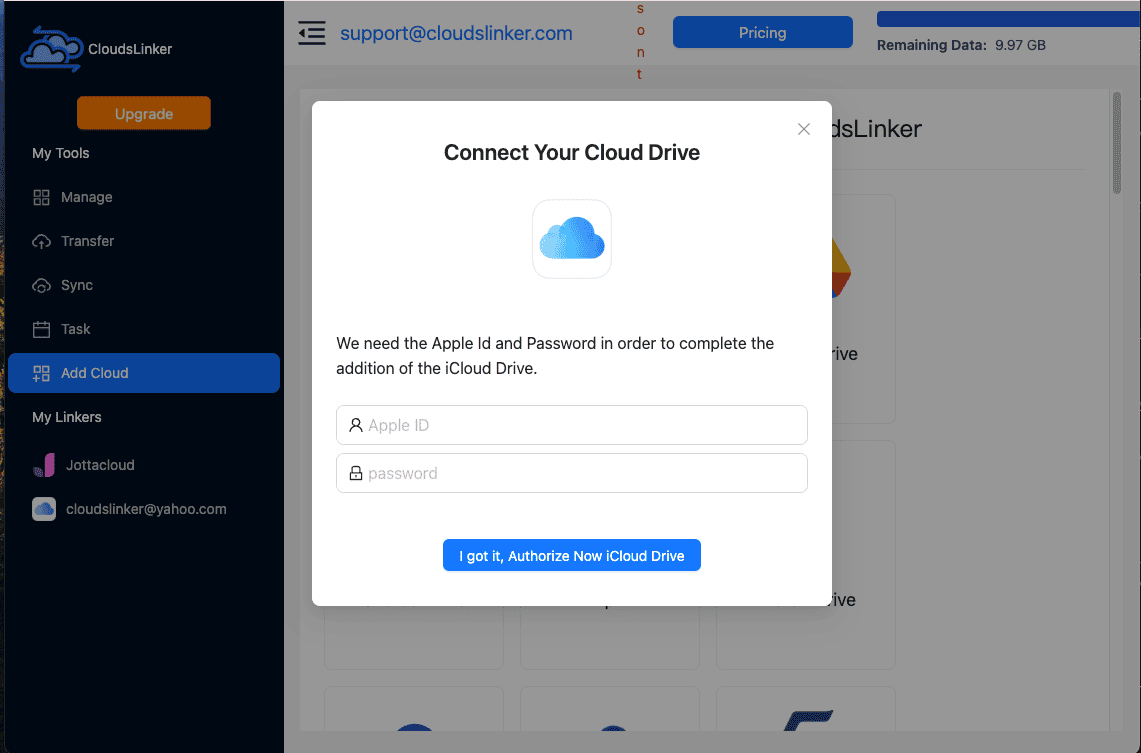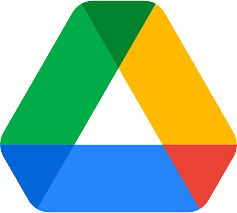How to Move Files from iCloud Drive to Google Drive: 5 Best Methods (2025)
Transferring files from iCloud Drive to Google Drive doesn’t have to be complicated. This guide walks you through five proven methods—from simple manual uploads to advanced cloud-to-cloud automation—to help you move your files smoothly and efficiently.
Introduction
As users increasingly rely on multiple cloud platforms, it's common to find important files scattered across services like iCloud Drive and Google Drive. Whether you're switching ecosystems, consolidating data, or looking for better collaboration features, transferring files between these platforms is often necessary. In this guide, we've outlined five effective methods to migrate your data from iCloud Drive to Google Drive—suitable for all types of users, from beginners to power users. No matter your technical skill level, there's a solution here that fits your workflow.
iCloud Drive is Apple’s cloud storage service, designed to seamlessly sync and store your files across all Apple devices. It integrates directly with macOS and iOS, allowing users to back up photos, documents, app data, and more in real time. With 5GB of free storage and additional plans via iCloud+, it’s an ideal option for Apple ecosystem users who value simplicity and security. Files saved to iCloud Drive are encrypted and accessible from iPhone, iPad, Mac, or even a browser via iCloud.com.
Google Drive is a powerful and widely adopted cloud storage platform by Google. It offers 15GB of free space, shared across Google Photos, Gmail, and Drive. Users can easily store, access, and share files from any device, while enjoying deep integration with Google Workspace tools like Docs, Sheets, and Slides. Known for its intuitive UI and advanced search features, Google Drive is a top choice for both personal productivity and professional collaboration.
Moving your data from iCloud Drive to Google Drive offers a range of benefits that go beyond simple file storage. Whether you're switching ecosystems or looking for better cross-platform compatibility, here are a few reasons why making the move makes sense:
- Better Cross-Platform Access: Google Drive works seamlessly on Windows, macOS, Android, iOS, and web, making your files accessible anywhere, regardless of device.
- Collaboration-Friendly Environment: With integrated tools like Docs, Sheets, and Slides, Google Drive enables real-time collaboration with colleagues, classmates, or clients.
- Flexible Storage Plans: Through Google One, users can upgrade their storage based on need, with flexible plans starting from 100 GB.
- Faster Search and Organization: Google’s powerful search engine and labeling system help you find and organize files more efficiently.
- Advanced Sharing Options: Set viewer permissions, expiration dates, and access controls—Google Drive gives you full control over how your content is shared.
Whether you're moving away from Apple devices or simply want a more open and collaborative workspace, Google Drive is a strong alternative that brings both power and convenience.
Before migrating, it’s worth understanding how iCloud Drive compares to Google Drive. Both offer cloud storage, but their features cater to slightly different needs.
| Aspect | iCloud Drive | Google Drive |
|---|---|---|
| Free Storage | 5 GB | 15 GB |
| Cross-Platform Support | Best with Apple ecosystem | Full support on all major OS and browsers |
| Collaboration Tools | Limited to Apple apps (e.g. Pages, Numbers) | Deep integration with Google Docs, Sheets, and Slides |
| Third-Party Integrations | Minimal | Extensive (e.g. Slack, Trello, Zoom) |
iCloud Drive works best if you're fully embedded in Apple’s ecosystem. However, for users who need more flexibility, collaboration features, and device compatibility, Google Drive often proves to be a more versatile choice.
Before you begin transferring your files, take a moment to review the contents of your iCloud Drive. Determine how much storage you're using and what type of files you'll be moving. This will help you decide whether the free Google Drive plan is sufficient, or if you need to explore options via Google One.
Also, make sure you have a Google Account ready. If you don't already have one, you can create one at accounts.google.com/signup. This account will give you access not just to Drive, but to all of Google’s productivity tools and sharing features—making your migration smoother and more effective.
Method 1: Transfer via Web Browsers
Step 1: Download Files from iCloud Drive
Start by visiting the official iCloud Drive website and logging into your Apple ID. Navigate to the folders or files you wish to migrate. To download, simply select the files and click the download icon in the top bar. If you're downloading a folder, it will be saved as a .zip file. Don’t forget to extract it before uploading.

Step 2: Upload to Google Drive
Once your files are ready, go to Google Drive and sign in with your Google account. Use the “+ New” button on the left sidebar to upload your documents or folders directly to your cloud space.

This method is simple and doesn’t require any additional tools, making it ideal for small, one-time transfers. However, for large folders or frequent migrations, the manual process can be slow and lacks features like batch filtering, automation, or folder syncing.
Method 2: Transfer with iPhone
Step 1: Open Google Drive App and Choose to Upload
On your iPhone, launch the Google Drive app and sign in with your Google account. Tap the “+” button (usually in the bottom right corner), then select “Upload” followed by “Browse” to access your iOS file system.

Step 2: Select Files from iCloud Drive
After tapping "Browse", the Files app interface will appear. Navigate to the “iCloud Drive” section. Choose the files or folders you want to upload. If a file hasn’t been downloaded to your iPhone yet, iOS will automatically fetch it from the cloud before uploading it to Google Drive.

This method is quick and doesn’t require a computer. It's perfect for users who are already working within the Apple ecosystem and want to transfer individual files or folders on the go. Just note that for large folders or batch operations, this approach may require multiple manual selections.
Method 3: Use PC Software
Step 1: Install Google Drive for Desktop
Begin by downloading and installing the Google Drive for Desktop application on your Mac. Once installed, it will create a virtual drive (usually labeled as “Google Drive”) in Finder, allowing you to interact with your cloud files just like local folders.

There's no need to install anything for iCloud Drive—it’s already built into macOS. You can find it in
Finder under the “iCloud” section in the sidebar, or directly at
~/Library/Mobile Documents/com~apple~CloudDocs. This is the local sync folder for all your
iCloud Drive files.
Step 2: Drag Files to Google Drive Folder
Open two Finder windows: one for iCloud Drive and one for your mounted Google Drive. Then simply drag the files or folders you want to transfer from iCloud into your Google Drive folder. The Google Drive desktop client will automatically detect and begin syncing the files to the cloud.

This method provides a familiar drag-and-drop experience and doesn't require command-line tools or third-party services. However, keep in mind that syncing large files may consume bandwidth and disk space temporarily, depending on your Google Drive settings (e.g. streaming vs mirroring).
Method 4: Transfer via Rclone
Step 1: Install Rclone and Configure Remotes
If you're comfortable with the command line, Rclone is a powerful tool that can help automate file transfers between cloud storage providers. Start by installing Rclone on your system.
Once installed, use the command rclone config to set up two remotes:
- Local iCloud Drive folder: this is usually located at
~/Library/Mobile Documents/com~apple~CloudDocs - Google Drive: Rclone supports Google Drive API integration via OAuth

Step 2: Run the Transfer Command
After configuration, you can transfer files using a command like the following:
rclone copy ~/Library/Mobile\ Documents/com~apple~CloudDocs gdrive:BackupFolder --progress
This will copy all contents from your iCloud Drive local folder to the specified folder in your Google
Drive. You can also use --dry-run to simulate the operation first.

Rclone is ideal for power users who want to schedule transfers, apply filters, or automate migration tasks via scripts. However, it requires basic terminal knowledge and initial setup time.
Method Five: Cloud Transfer with Cloudslinker
Overview of Cloudslinker for iCloud Drive to Google Drive Transfer:
Cloudslinker
is a web-based tool that enables fast and seamless file transfers across more than
30 cloud platforms—including iCloud Drive and Google
Drive. All transfers are performed in the cloud, which means you don’t need to download
or re-upload files manually. Whether you’re moving a few files or thousands, Cloudslinker ensures
efficient and secure transfers without occupying your local bandwidth.
Step 1: Log in to Cloudslinker
Go to app.cloudslinker.com and sign in with your account. On the left sidebar, click “Add Cloud” to start connecting your cloud drives. Begin by authorizing Google Drive using your Google account. You'll be prompted to grant access via OAuth—Cloudslinker does not store your credentials directly.

Step 2: Add iCloud Drive Account
Next, choose “iCloud Drive” from the cloud provider list. You'll need to enter your Apple ID and password. If your Apple account has Two-Factor Authentication (MFA) enabled, a prompt will appear asking for the 6-digit code sent to your Apple devices. Enter the code and click “Confirm” to complete the authorization.

Step 3: Set Up the Transfer Task
Head over to the “Transfer” tab. Choose iCloud Drive as the source, then select the destination folder within your Google Drive. You can browse and select specific folders or files directly from the UI.

You may also configure advanced options like file type filters or size limits. For example, skip all .tmp files or files larger than 2GB. More details are available in the Cloudslinker Filter Guide.

If you prefer to automate future syncs, Cloudslinker supports scheduled transfers—daily, weekly, or custom dates. Learn how to enable these options in our schedule configuration guide.

Step 4: Monitor and Manage the Task
Once started, your task will appear in the “Task List” panel. Here, you can check progress, pause, retry, or delete tasks at any time. For failed transfers, retry options are available without needing to repeat the whole process.
Step 5: Confirm Transfer Completion
Once your transfer is complete, you’ll receive a success status in the task panel. Your iCloud Drive files are now safely stored in your Google Drive account.
Cloudslinker is ideal for users who want a simple, efficient, and fully cloud-based solution to migrate files between platforms like iCloud Drive and Google Drive. With a generous free quota and no installation required, it's a great fit for both casual and professional users.
Looking for More Cloud Transfer Options?
In addition to iCloud and Google Drive, Cloudslinker also supports Dropbox, OneDrive, Box, and more. Whether you're consolidating storage or organizing files across services, the platform offers everything you need.
Comparison of the Five Methods
Each method for transferring files from iCloud Drive to Google Drive has its own advantages. The best approach depends on your device, data volume, and familiarity with cloud tools. Here's a side-by-side comparison to help you decide:
| Method | Ease of Use | Speed | Data Volume | Technical Skill | Best For |
|---|---|---|---|---|---|
| Web-Based Transfer | High | Medium | Low to Medium | Beginner | Small personal transfers |
| iPhone Manual Upload | High | Medium | Low | Beginner | On-the-go mobile users |
| macOS Finder + Desktop Google Drive | Medium | High | Medium to High | Basic | macOS users with large folders |
| Command Line via Rclone | Low | Very High | High to Very High | Advanced | Automation, power users |
| CloudsLinker One-Click Transfer | Very High | Very High | Any Size | Beginner | Fast, secure, no downloads |
Consider factors like file size, network speed, and automation needs when choosing a method. If you're unsure, starting with a simple method like Cloudslinker or web-based upload is a great first step.
Moving files from iCloud Drive to Google Drive is generally straightforward, but there are still a few things you should be aware of to avoid interruptions or data loss:
- Offline Files: Files in iCloud Drive that haven’t been downloaded locally may delay transfers. If using manual or desktop sync methods, ensure files are fully available on your device.
- Google Drive Upload Limits: Google enforces a 750GB/day upload limit per account. Transfers beyond this cap will automatically resume the next day if using cloud-based tools.
- Speed Factors: Manual methods (web, Finder) depend on your internet bandwidth. Server-to-server tools like Cloudslinker are significantly faster and unaffected by local speed limits.
- Check Google Drive Storage: Ensure your Google account has enough free space. If not, consider upgrading through Google One before starting the migration.
- Security First: Use services that support secure OAuth login and encrypted transfers. For example, Cloudslinker uses 256-bit AES encryption and does not store passwords.
- Practical Example: Migrating 1TB of files? Your safest bet is a scheduled transfer tool like Cloudslinker, which can auto-resume across days without requiring you to monitor the process manually.
Keeping these factors in mind will help you avoid interruptions and ensure a smooth, successful migration from iCloud Drive to Google Drive.
Watch Our Step-by-Step Video Tutorial
Learn how to transfer files from iCloud Drive to Google Drive with our clear, visual walkthrough. This tutorial is perfect for anyone—whether you're new to cloud storage or just looking for the easiest method. We’ll guide you through every step, from accessing your files in iCloud to syncing them with Google Drive using various tools including Cloudslinker. Get expert tips, avoid common mistakes, and simplify your cloud migration process. Watch now and move your files with confidence!
Frequently Asked Questions
Conclusion
We’ve explored five practical methods to move files from iCloud Drive to Google Drive, each tailored to different needs—whether you prefer manual control, seamless automation, or command-line precision. From simple drag-and-drop techniques to powerful tools like Rclone and all-in-one platforms like Cloudslinker, the right approach depends on your data volume, device, and comfort with technology. By choosing the method that suits you best, you can simplify your cloud management and keep your digital files organized across platforms.
Online Storage Services Supported by CloudsLinker
Transfer data between over 44 cloud services with CloudsLinker
Didn' t find your cloud service? Be free to contact: [email protected]
Further Reading
Effortless FTP connect to google drive: Transfer Files in 3 Easy Ways
Learn More >
Google Photos to OneDrive: 3 Innovative Transfer Strategies
Learn More >
Google Photos to Proton Drive: 3 Effective Transfer Techniques
Learn More >











































